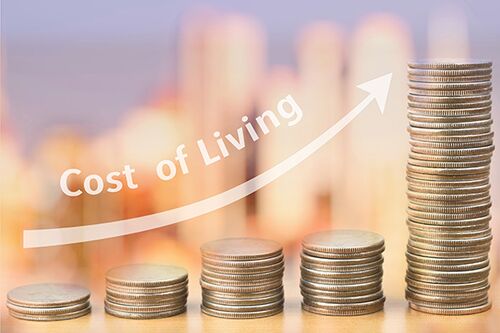According to CSO Consumer Price Index figures, prices rose by 5.6% between February 2021 and February 2022. In their Winter 2022 Economic Forecast, the European Commission forecast inflation, measured by the HICP, to grow by 4.6% this year. Unfortunately, these figures are likely to increase further given the impact of the Russian invasion of Ukraine and the resulting economic sanctions placed on Russia.
According to the CSO, the areas where prices rose most dramatically over the year were Transport (+15.4%), and Housing, Water, Electricity, Gas & Other Fuels (+12.7%). This is a worrying trend, especially when put into the context of the pre-existing high levels of material deprivation already present in the country, as was covered in a previous article Addressing the Problem of Income Adequacy and Meeting Basic Needs.
A key finding of polling carried out by RedC on behalf of the Society of St Vincent de Paul (released on the 10th of February 2022), was that the number of people reporting that they are finding it difficult to manage financially had doubled since the start of the pandemic in 2020, then at 9% increasing to 18% in January 2022.
Of those surveyed, 37% said they had reduced their essential heating and electricity use, while 17% had been cutting back other essentials such as food. A trend which became significantly more pronounced with single parents, 47% having cut back on essential heating and electricity, and 37% having cut back on other essentials such as food. Other groups facing problems are unemployed people, 48% of whom have cut back on essential heating and electricity, and renters in local authority housing, 61% of whom have cut back on essential heating and electricity.
Over the year, between February 2021 and February 2022, Food and non-alcoholic beverages rose by 3%. This situation is likely to get worse as problems in the global supply chain, the rising costs of raw materials, and the rising cost of energy work their way through the various levels of the economy. As covered in a previous article The Affordability of a Healthy Diet, food affordability was already a problem and will be exacerbated by further rises in the cost of producing and distributing food.
Better-off families are likely to be in a stronger position to handle rising prices: they may have built up savings during the pandemic or have more scope for cutting back in general. Lower income families on the other hand are likely to be in a much worse position: they could be surviving week to week, may already be in debt, and have less scope for cutting back.
The ongoing housing crisis promises to further exacerbate problems with the cost of living. According to the Residential Tenancies Board, the price of rent grew by 8.3% between the third quarters of 2020 and 2021 alone, with much of the growth coming from outside the traditional urban high pressure zones. This has led to a situation where more than half of all renters are worried about their ability to make rent, with 9% already behind on payments, and 29% worried about facing eviction in the next six months.
Lone parents are worried about their ability to meet their housing costs, whether it be rent or mortgage, at a higher rate of 44% compared to the average 25%. As covered in a previous article Childcare as a Barrier to Employment, this group already faces issues with childcare costs being prohibitively expensive.
Overall, it is a grim picture. The situation was already complicated by a number of crises interacting all at once, and this has only been further frustrated by the war in Ukraine. Prices look set to rise for the near to medium future and more people will struggle to make ends meet. Robust and targeted interventions will be required to alleviate the situation and prevent suffering of the most vulnerable in society.
